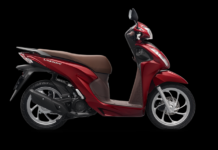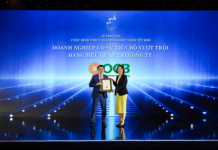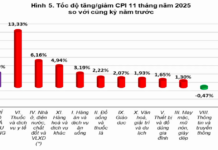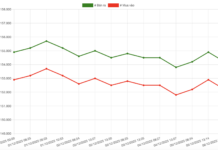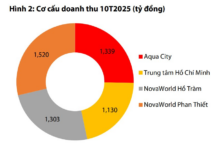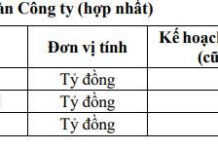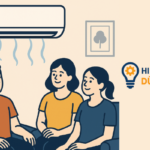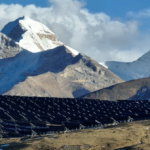Electric kitchen appliances have gained popularity in recent years, with more and more households opting for electric stoves over traditional gas stoves. However, when it comes to induction cooktops, infrared cooktops, and gas stoves with electric ignition, which one is the most energy-efficient and cost-effective?
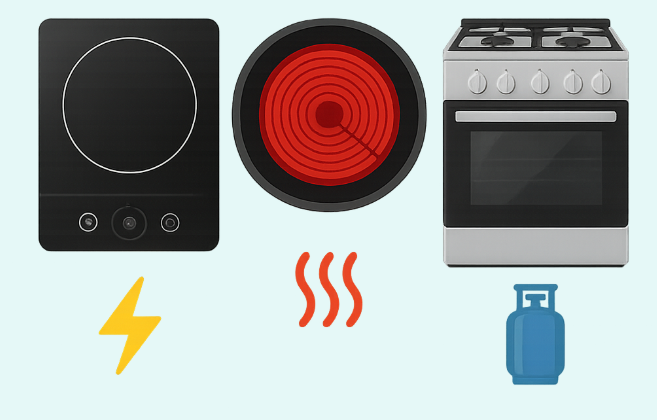
1. Induction Cooktop: High Efficiency, Lower Electricity Costs
Induction cooktops utilize electromagnetic induction to generate heat directly in the cookware, resulting in minimal heat loss to the surroundings.
Average Power: 1,800–2,200 watts.
Efficiency: 90–95%, with only about 5–10% of energy lost to the environment.
Operating Cost: Boiling 1 liter of water in 5 minutes consumes approximately 0.15 kWh, costing around 500–600 VND.
Pros: Fast cooking, safe, minimal heat radiation, easy to clean.
Cons: Requires induction-compatible cookware, higher initial investment compared to infrared cooktops.
2. Infrared Cooktop: Flexible but More Power-Hungry
Infrared cooktops generate heat through infrared rays emitted by a wire or ceramic heating element, indirectly heating the cookware through the glass surface.
Average Power: 2,000–2,200 watts.
Efficiency: 60–70%, with a significant portion of energy lost to the environment.
Operating Cost: Boiling 1 liter of water in 8 minutes consumes approximately 0.25 kWh, costing around 800–1,000 VND.
Pros: Compatible with a wide range of cookware, including glass, ceramic, and aluminum.
Cons: Slower cooking, hot stove surface, prone to causing burns, higher electricity consumption than induction cooktops.
3. Gas Stove with Electric Ignition: Convenient but Less Cost-Controllable
Gas stoves with electric ignition, also known as electronic ignition gas stoves, primarily use gas as the energy source, with electricity only required for spark generation.
Power Consumption: Negligible, approximately 1–2 watts per ignition, insignificant in the overall energy usage.
Fuel Cost: Depends on the market price of gas. A 12kg gas cylinder (priced at 450,000–500,000 VND in 2025) typically lasts for 1–2 months for a family of 3–4 members. On average, it costs 7,000–8,000 VND per day, higher than the cost of using an induction cooktop under similar cooking conditions.
Pros: Not reliant on electricity, convenient during power outages, familiar to many users.
Cons: Risk of fire and explosions, difficult heat control, potentially higher long-term costs.
4. Overall Cost Comparison
Induction Cooktop: Most energy-efficient among electric cooktops, low operating costs, especially for dishes that require longer cooking times.
Infrared Cooktop: Flexible in terms of cookware compatibility but consumes more electricity, resulting in electricity bills that could be 20–30% higher than induction cooktops.
Gas Stove with Electric Ignition: Negligible electricity consumption, but monthly gas costs are typically higher than electricity costs for induction cooktops.
5. Which One Is the Best Choice for Your Family?
If cost-saving and fast cooking are your priorities, an induction cooktop is the way to go.
For flexibility in cookware, an infrared cooktop is a suitable option, despite its higher electricity costs.
In areas with frequent power outages or for those accustomed to traditional gas stoves, a gas stove with electric ignition remains a safe choice, although it may be challenging to optimize costs.
When it comes to energy consumption, induction cooktops take the lead due to their high efficiency. Infrared cooktops are more power-hungry, while gas stoves with electric ignition depend on fluctuating gas prices. The choice depends on your cooking habits, budget, and preference between energy efficiency and convenience.
Should You Keep Your Windows Closed When Using Air Conditioning? The Truth May Surprise You!
“Keeping the doors closed with the air conditioner running is a common practice for many, but it’s not necessarily the most optimal method. This habit may even pose potential health risks and impact energy efficiency.”
The Solar Power Giant: $2.8 Billion Investment in Vietnam’s Tra Vinh and Dak Lak, with Plans for an R&D Hub
With a formidable workforce of 97,000 employees, assets totaling 150 billion USD, and an impressive installed power generation capacity of 219 GW, of which 52.4% is clean energy, the Group stands tall as a powerhouse in the energy sector, as outlined on their website.

